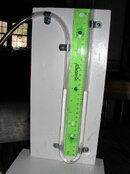BackstageDiver
Registered
I've realized recently that my 2nd stage requires more effort to inhale than other 2nd stages, even of identical models. My octopus backup is easier to inhale. And I recently picked up an identical model to mine for my girlfriend who just got into the sport. Even being the same model, hers is easier to inhale as well.
We both have Dive Rite RG2010 2nds. I rebuilt both myself with the Dive Rite service kits, both the exact same way. Both were adjusted using an inline adjustment tool to be right on the edge of freeflowing. But still hers is easier to breathe than mine.
What adjustments did I maybe overlook, or what else could cause such a difference in breathing effort?
We both have Dive Rite RG2010 2nds. I rebuilt both myself with the Dive Rite service kits, both the exact same way. Both were adjusted using an inline adjustment tool to be right on the edge of freeflowing. But still hers is easier to breathe than mine.
What adjustments did I maybe overlook, or what else could cause such a difference in breathing effort?





